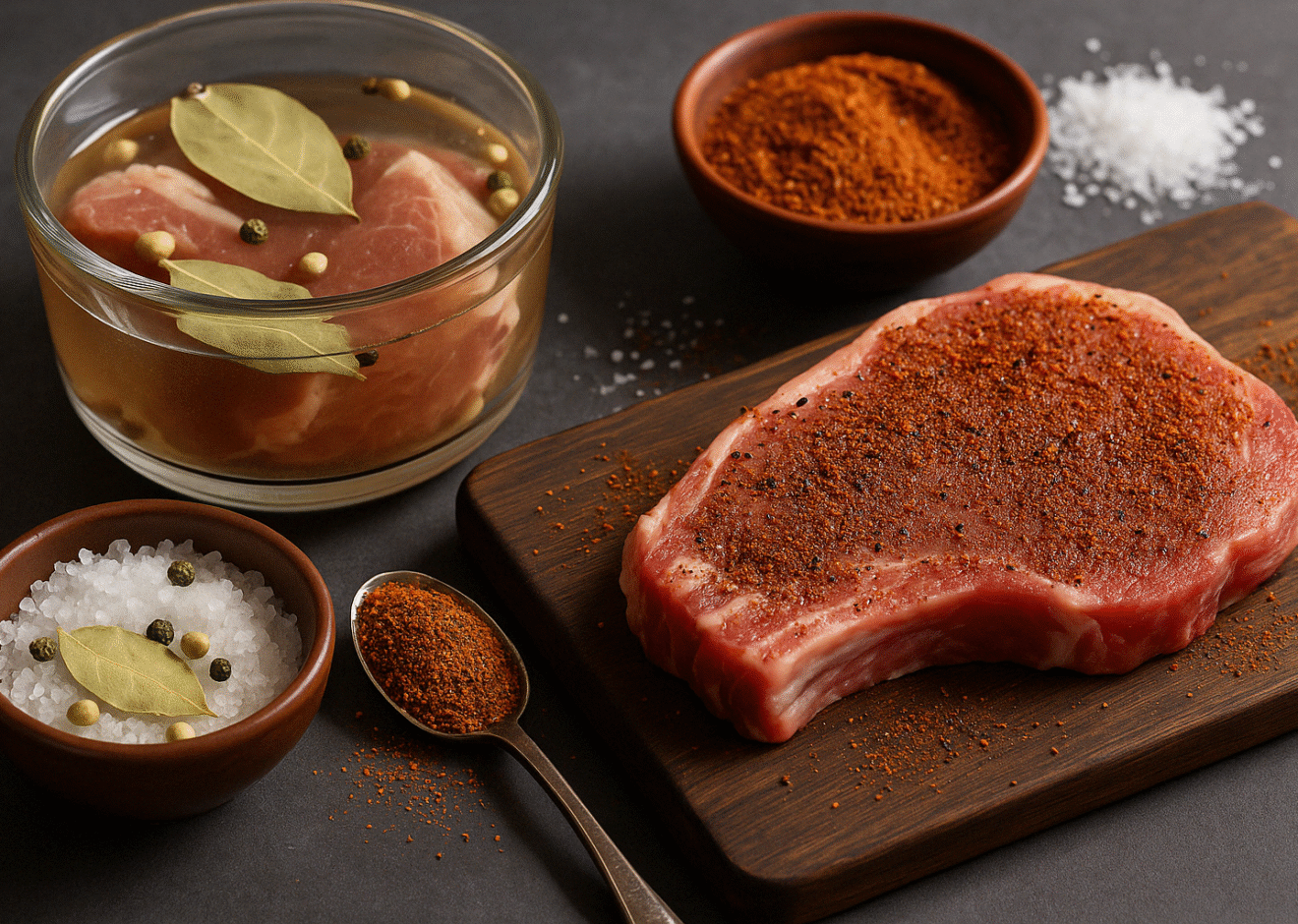
Want juicy, flavorful smoked meat every time? Learn how to use brines and rubs to prep your meat like a pitmaster before it ever hits the smoker
Flavor Starts Before the Smoke
The best BBQ doesn’t begin when the meat hits the smoker—it starts long before. What you do to your meat before it cooks sets the stage for how it tastes, how juicy it is, and how deep that smoke flavor sinks in.
Two powerful prep tools every pitmaster should master: brines and rubs.
What Is Brining?
Brining is the process of soaking meat in a salty solution (sometimes with sugar, spices, or aromatics) before cooking. The salt helps the meat retain moisture and enhances natural flavors. There are two main types:
1. Wet Brine
A salty water bath that penetrates deep into the meat.
- Basic Ratio: 1 cup kosher salt to 1 gallon of water
- Add sugar, herbs, citrus, garlic, or spices as you wish
- Brine time varies:
-
- Chicken: 4–12 hours
- Pork chops: 2–6 hours
- Turkey: 12–24 hours
2. Dry Brine
Rubbing salt directly onto the meat and letting it sit in the fridge.
- Uses less space and no container of water
- Great for whole chickens, steaks, or brisket
- Dry brine uncovered for 12–24 hours in the fridge
Pro Tip: Always rinse off excess salt after brining and pat the meat dry before applying your rub.
What Are Rubs?
Rubs are spice blends that coat the surface of your meat, forming that beautiful bark we all crave. They come in two varieties:
1. Dry Rub
A mix of spices, herbs, sugar, and salt applied directly to the meat.
- Builds a flavorful crust
- Helps hold in moisture
- Can be applied right before smoking or several hours ahead for deeper flavor
Common Rub Ingredients:
- Paprika
- Brown sugar
- Kosher salt
- Black pepper
- Garlic powder
- Onion powder
- Cayenne
2. Wet Rub (Paste)
A dry rub mixed with a little oil, mustard, or vinegar to form a paste.
- Sticks better to meat
- Adds moisture and tang
- Great for ribs, chicken, and pork shoulder
Applying Rubs the Right Way
- Even coverage: Coat all sides evenly and press the rub into the meat (don’t just sprinkle it).
- Let it rest: Let meat sit for at least 30 minutes after applying rub—or refrigerate overnight for max flavor.
- No oil needed: Dry rubs don’t require oil to stick. If you’re not using a wet rub, just pat the meat dry and go.
Brine vs. Rub: Do You Need Both?
They’re not mutually exclusive. You can absolutely brine first and then apply a rub—just make sure the meat is dry before adding your rub.
- Brine = moisture and internal seasoning
- Rub = surface flavor and crust (aka bark)
Together, they deliver juicy, flavor-packed BBQ that’s unforgettable.
Final Thoughts
Think of brining and rubbing as your BBQ foreplay—it sets the mood, builds anticipation, and ensures satisfaction when the final bite hits. Take your time, get creative with flavors, and don’t skip the prep. Your smoker (and your guests) will thank you.
